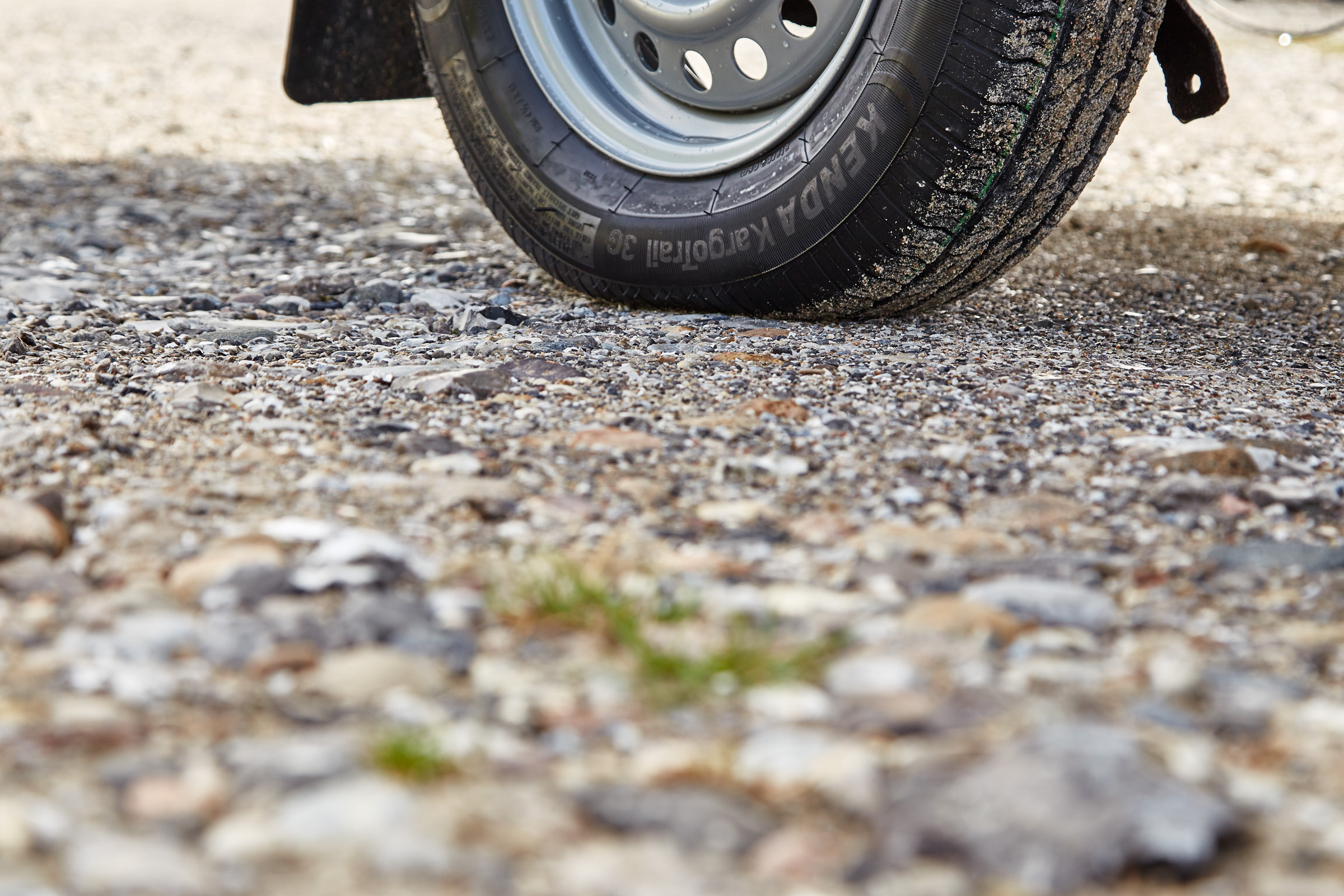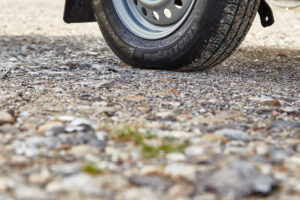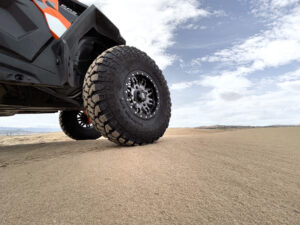Waiting too long to swap out worn tires can cost you traction, control, and even your safety. Here’s how to know when it’s time to make the switch, based on tread depth, age, condition, and seasonal needs.
Tread depth: should you wait until the legal limit?
In most European countries, the legal minimum tread depth for passenger car tires is 1.6 mm, but the rules can vary for heavy-use and winter tires. The 1.6 mm rule applies to any road-going tire, including those on trailers, caravans, and towed vehicles.
However, safety and performance can start dropping off before you hit that 1.6 mm minimum. We recommend changing your tires at around 3 mm tread depth, especially if you often drive in wet conditions.
For off-road and specialty tires we recommend that you change them at between 6-4 mm depending on the type, so you don’t lose grip and traction when it counts. Deep tread is especially important for driving on loose or muddy surfaces.
How to check tread depth
- Use a tread depth gauge for a precise reading
- Or try the coin test for on-the-road tires: insert a €2 coin into the tread. If the silver rim of the coin is visible, your tread is likely at or below 4 mm – not yet illegal, but it’s getting close to the 3 mm safety threshold that many experts recommend for wet performance.
- Some tires have built-in wear bars in the form of raised lines inside the grooves. If they’re flush with the tread, it’s time for a replacement
Tip
A recent EU amendment to regulation no. 117 now requires tire manufacturers to prove that their tires still grip well on wet roads – even when worn to 1.6 mm. This helps ensure safer braking throughout the tire’s life. However, since the rules have not been applied to many existing and older patterns yet, changing your tires at around 3 mm tread depth is often a safer move.
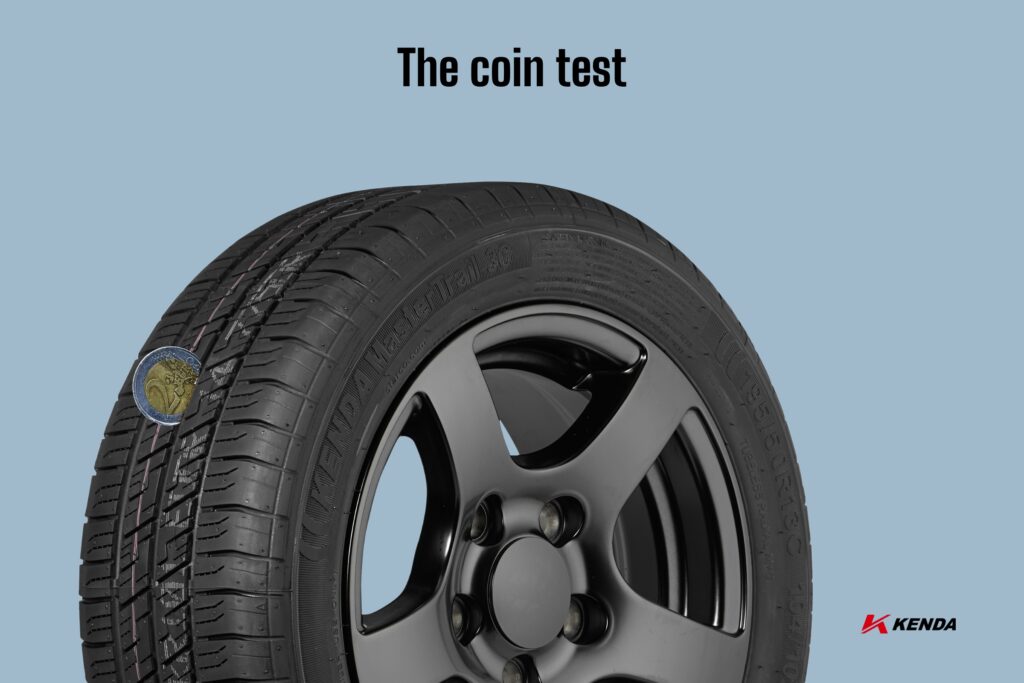
Age: even good-looking tires can be less safe
Your tires age, even if you don’t drive much. Rubber hardens over time, reducing grip and flexibility. Most manufacturers and safety organisations recommend replacing tires every 6-10 years, regardless of how they look or how deep the tread is. Some also recommend not putting unused tires into service if they are over six years old.
How to check tire age for on-the-road tires
For most tires, you can check the tire’s sidewall to see the manufacturing date. On-the-road tires have a 4 digit DOT code designating the time of manufacturing (e.g., ‘2719’ means the 27th week of 2019).
How to check tire age for specialty tires
Most road-approved specialty tires (agricultural, industrial, turf, trailer) have a 4-digit DOT code on the sidewall. But off-highway-only tires, like those for wheelbarrows, mowers, or forklifts, may not always show a clear date. If you check the sidewalls and no date is visible, you can contact the manufacturer with the serial or batch number.
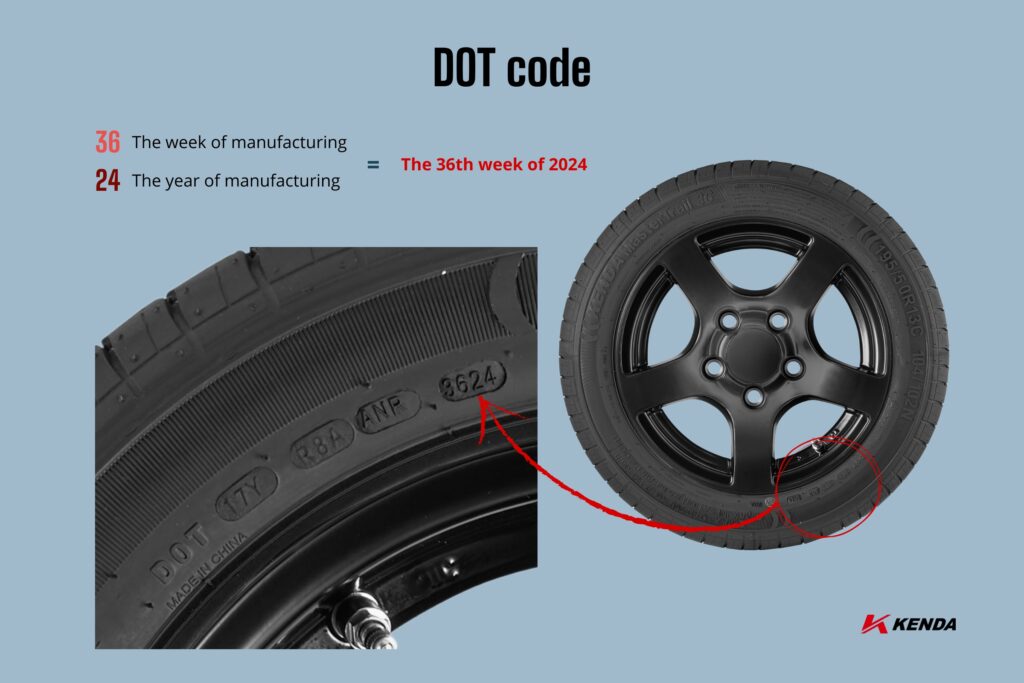
Wear and damage: look beyond the tread
Alignment issues, over- or under-inflation, and rough terrain can lead to irregular wear and tire damage. If your tire has uneven wear, your alignment or pressure might need to be fixed. If your tire has cracks, bulges or punctures, these are signs you need a replacement.
Watch for these signs it’s time to replace tires:
- Cracks in the sidewall or between tread blocks
- Bulges or blisters, especially after heavy loads or curb hits
- Punctures or chunking (common in off-road and industrial use)
- Dry rot or weathering, especially on older or stored tires
Extend your tire life:
Check pressure monthly – too low or too high pressure shortens the tire’s life.
Rotating your tires is useful when the tires wear unevenly due to steering, load, or terrain, the machine is used frequently on hard surfaces where tread wear is more noticeable and when one axle tends to carry more load or face more turning stress.
Don’t skip alignment and suspension checks, especially after impacts or off-road use.
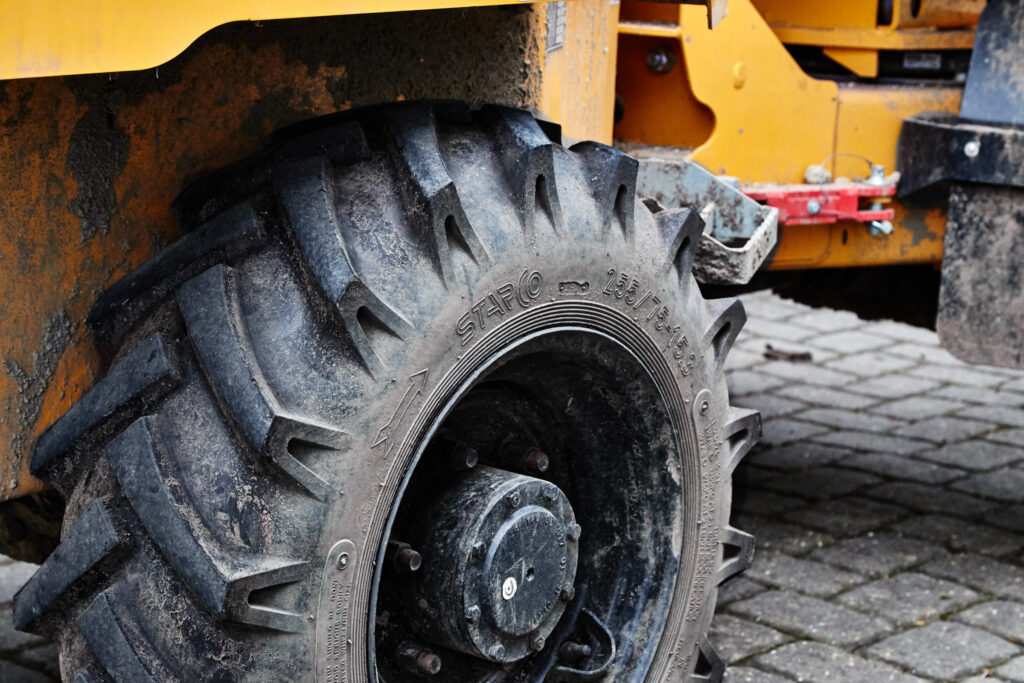
Seasonal changes: swap your tires with the weather
If you live in regions where the weather gets cold or icy, switching between summer and winter tires ensures better performance, grip, and longevity. And sometimes it is illegal not to.
For example, in Germany and Sweden, winter PCR tires must have the 3PMSF symbol (three-peak mountain snowflake) when driving in winter conditions (snow, ice, slush, frost). In Sweden, this also applies to trailers and caravans.
Tip:
- Switch to winter tires when temperatures consistently drop below 7°C
- Store your off-season tires in a cool, dry place away from sunlight
Stay safe, stay in control
- In most European countries, the legal minimum tread depth for passenger car tires is 1.6 mm, however, we recommend changing your tires at around 3 mm tread depth, especially if you often drive in wet conditions.
- For off-road and specialty tires we recommend that you change them at between 6-4 mm depending on the type.
- Replace your tires every 6-10 years, regardless of how they look or how deep the tread is.
- If your tire has uneven wear, your alignment or pressure might need to be fixed.
- If your tire has cracks, bulges or punctures, these are signs you need a replacement.
- Check pressure monthly – too low or too high pressure shortens the tire’s life.
- Rotate your tires around every 10.000 km if the machine is used frequently on hard surfaces or when one axle tends to carry more load or face more turning stress.
- Switch to winter tires when temperatures consistently drop below 7°C.
